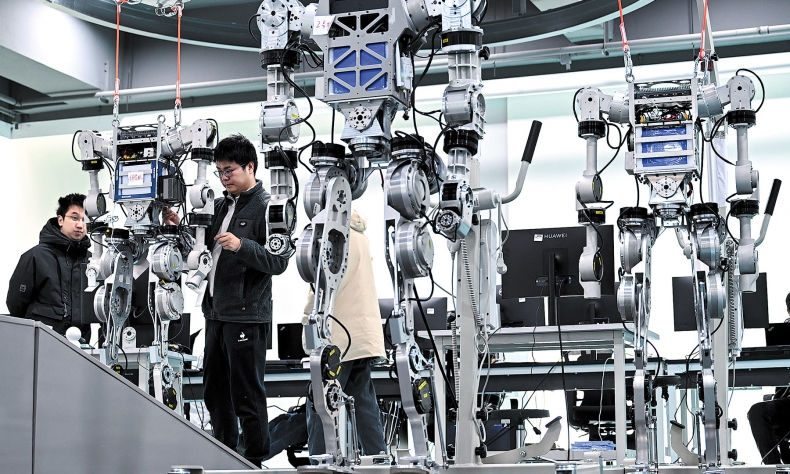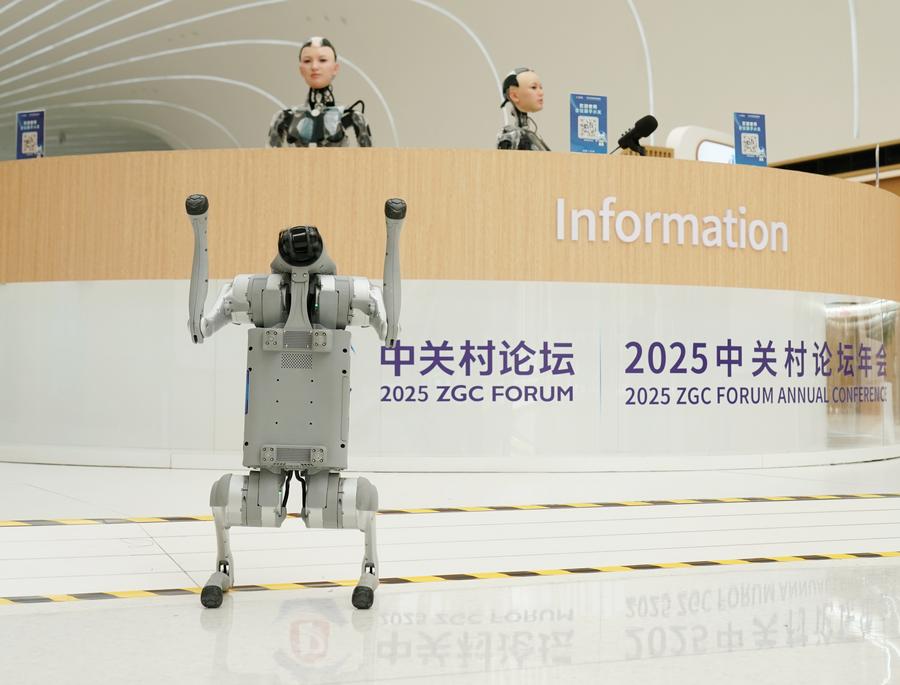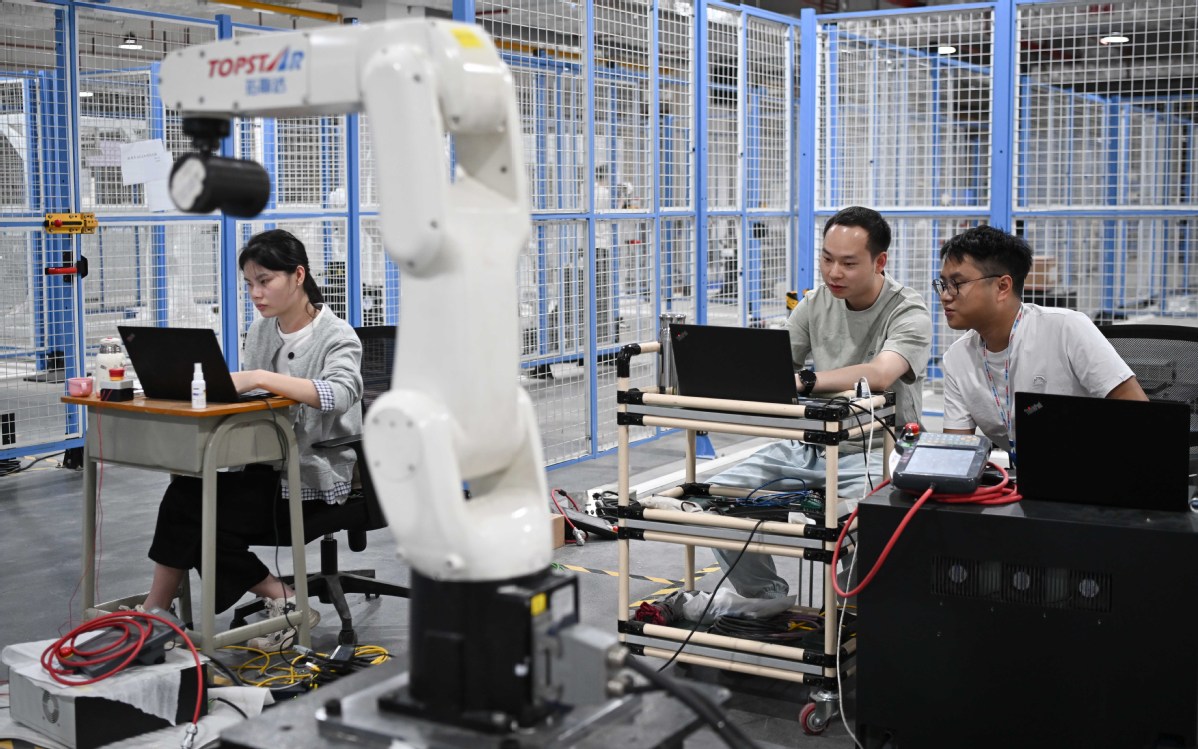Building a Sci-Tech Powerhouse

China is well aware that opening up and cooperation are the only way for science and technology to progress. This idea is being put into practice in science and technology innovation in China.
Recent breakthrough achievements such as the launch of DeepSeek’s revolutionary AI models and the collection of samples from the far side of the moon are indicators of just how far China has developed in science and technology. Unable to produce a car just seven decades ago, China now plans to build itself into a world leading sci-tech powerhouse by 2035. This goal is one of many in its drive to become a great nation and achieve national rejuvenation by the middle of this century. In pursuit of these goals, President Xi Jinping has called for self-reliance and self-strengthening while also remaining committed to openness and international cooperation.
Beijing Review recently spoke to Gao Yi, an associate research fellow at the Chinese Academy of Science and Technology for Development, to provide background information on President Xi’s vision and discuss how China’s sci-tech powerhouse initiative will impact the world at large. Edited excerpts of the interview follow:
Beijing Review: Why is President Xi attaching such great importance to self-reliance in science and technology?
Gao Yi: President Xi has always attached great importance to self-reliance in science and technology, emphasizing that the prosperity of science and technology leads to the prosperity of the nation, and the strength of science and technology leads to the strength of the country.
Since ancient times, science and technology have been driving human society forward with an irresistible force. In this sense, technological strength determines the balance of political and economic power in the world and also determines the future of countries. Some countries have seized the opportunity created by technological revolution and achieved rapid development of their economy, technology and national defense, as well as rapid improvement of comprehensive national strength.
President Xi put forward a major statement saying that innovation must be the primary driving force for development, which means innovation should be placed in the core position of the overall modernization of China, and self-reliance in science and technology should be the strategic support for national development.
In today’s world, sci-tech innovation has a wider impact on economic and social development, as well as people’s lives. The level of technological development reflects the country’s comprehensive strength and its core competitiveness. President Xi has emphasized that the realization of high-level self-reliance in science and technology leads to high-quality development.

Does this emphasis on self-reliance have the potential to adversely affect international cooperation?
Self-reliance in science and technology is not about working in isolation, but rather about taking the initiative in the global innovation network. In today’s world, no country can afford to stay out of the global system. So international cooperation is essential.
China has established scientific and technological cooperation relationships with more than 160 countries and regions, and participated in international scientific programs, such as the International Thermonuclear Experimental Reactor (ITER). (China officially joined ITER, a joint project involving seven members, in 2006. The project, which is under construction in south France, will be the world’s largest experimental device to produce controlled thermonuclear fusion power, popularly known as an artificial sun—Ed.)
At the same time, self-reliance in science and technology is aimed at enhancing our own abilities, but it doesn’t necessarily mean excluding external resources. Faced with global challenges, such as climate change and public health crises, Chinese and international scientific research institutions jointly conducted vaccine research and development and developed carbon neutrality technology. These are cases that reflect the necessity of international cooperation.
Self-reliance in science and technology will lead to win-win results in the presence of open cooperation. This inclusive and innovative philosophy is not only China’s choice, but also of great benefit to global technological progress.
China will further strengthen international cooperation in science and technology, focusing on the common and long-term interests of humanity and contributing more Chinese solutions and wisdom to the long-term development of human society.
China firmly pursues a win-win strategy of opening up and is willing to work with countries around the world to promote sci-tech innovation, so as to benefit their people. Sci-tech innovation is an important force for humanity to jointly address risks and challenges, and promote peace and development. China will continue to advance international scientific and technological exchange and cooperation in order to build an open innovation ecosystem with global competitiveness.
Are there any specific criteria that define a sci-tech powerhouse?
A sci-tech powerhouse should feature world-class technological strength and innovation capability, which support the overall development of economy, national defense and comprehensive national strength, enhance human wellbeing and promote global development.

President Xi clarified the term sci-tech powerhouse in five aspects:
• strong basic research and original innovation capabilities, which produce significant original and disruptive achievements;
• strong capabilities in tackling key and core technologies, which provide strong support for high-quality development and high-level security. Key and core technologies refer to technologies that are crucial for a country’s development and competitiveness. China’s focus on these technologies, such as AI, quantum technology and new energy, is driven by strategic goals of self-reliance, global competitiveness and national security;
• strong international influence and leadership as one of the world’s major scientific and innovation centers;
• a strong ability to cultivate and gather high-level scientific and technological talents; and
• a strong sci-tech governance system with a world-class innovation ecosystem and research environment.
Once China becomes a sci-tech powerhouse, how will it contribute to the world’s science and technology progress?
Science and technology innovation knows no borders. China is well aware that opening up and cooperation are the only way for science and technology to progress. This idea is being put into practice in science and technology innovation in China.
As I mentioned before, at present, China has established scientific and technological cooperation relationships with more than 160 countries and regions around the world, and signed 118 intergovernmental scientific and technological cooperation agreements.
Let me give you some examples, such as the Chang’e-6 lunar probe carrying international payloads to explore the moon and the announcement of welcoming astronauts from other countries onto the Tiangong space station. China’s circle of friends for scientific and technological openness is expanding day by day, promoting common development and sharing of achievements.
China has also demonstrated active global participation in the field of science and technology. It is not only committed to promoting the formulation of global scientific and technological rules, agenda setting and governance reform, but also deeply involved in global innovation governance issues, such as public health and clean energy.
At present, China has joined more than 200 international organizations and multilateral mechanisms and has participated in over 60 international scientific programs and projects, including ITER, the International Ocean Discovery Program (an international marine research collaboration that explores Earth’s history and dynamics using ocean-going research platforms—Ed.), and the Square Kilometer Array radio telescope (an international effort to build the world’s largest radio telescope—Ed.)
In addition, China has proposed the International Science and Technology Cooperation Initiative, aiming to explore new models of mutually beneficial global cooperation with all parties in the field of science, technology and innovation.
 Facebook
Facebook
 Twitter
Twitter
 Linkedin
Linkedin
 Google +
Google +










